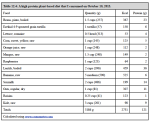Tuck Split Squat
I highly recommend tuck split squats for building full range strength and adding mass to your hips and thighs with minimal stress on your lower back. The tuck split squat is a preparation for the single leg squat known as the pistol squat. However, if you don't want to advance to pistol squats, you can use tuck split squats as a basic single leg squat movement without ever advancing to the pistol squat. You can progress the tuck split squat indefinitely by using either a hip belt and plates, or resistance bands.
How to do the tuck split squat
To do the tuck split squat the way I recommend, you need a platform about 3-4" in height, such as the one I made consisting of six 1-ft long 2 x 4 boards screwed to two 2-ft long 2 x 4 boards.
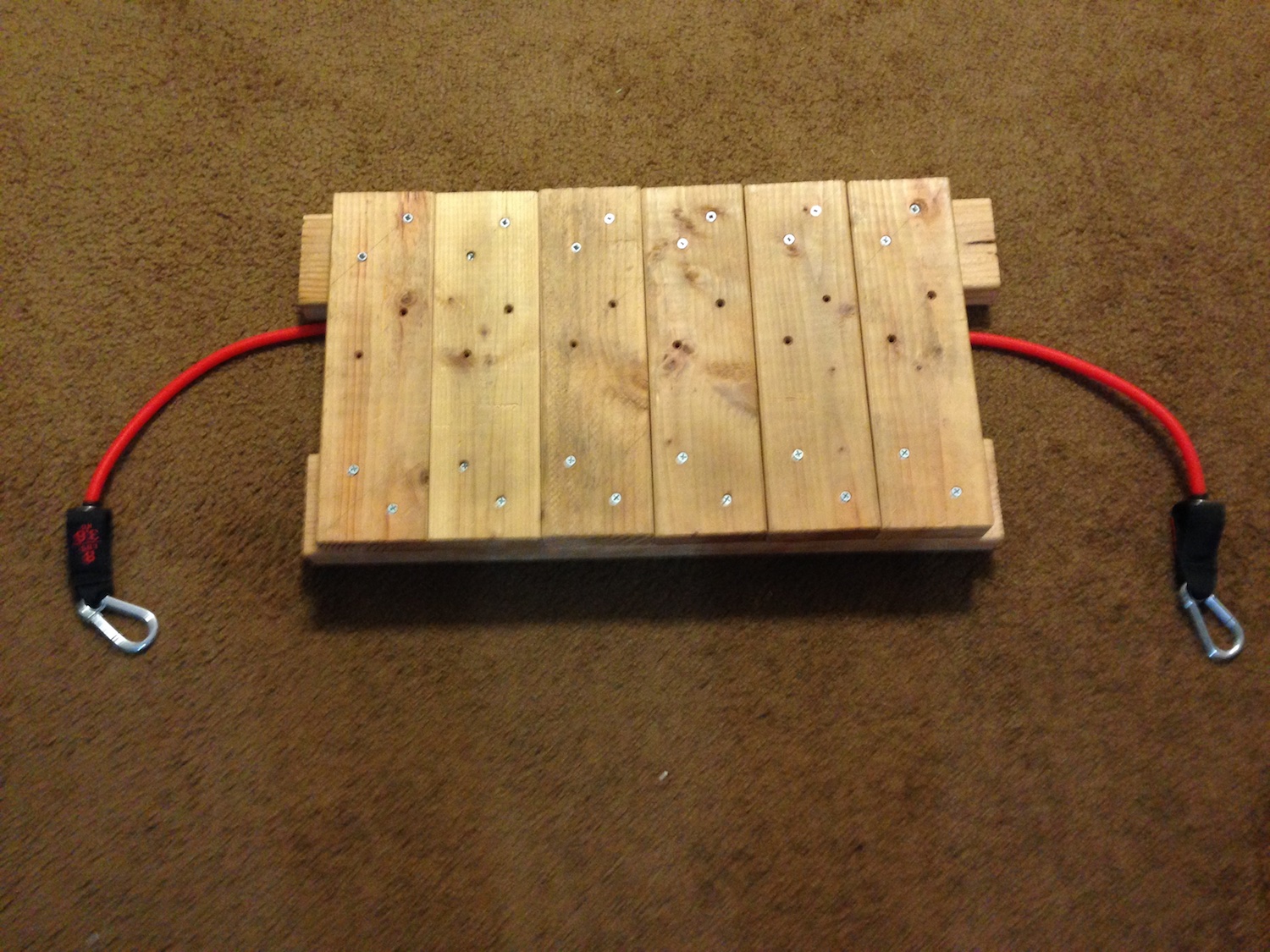 |
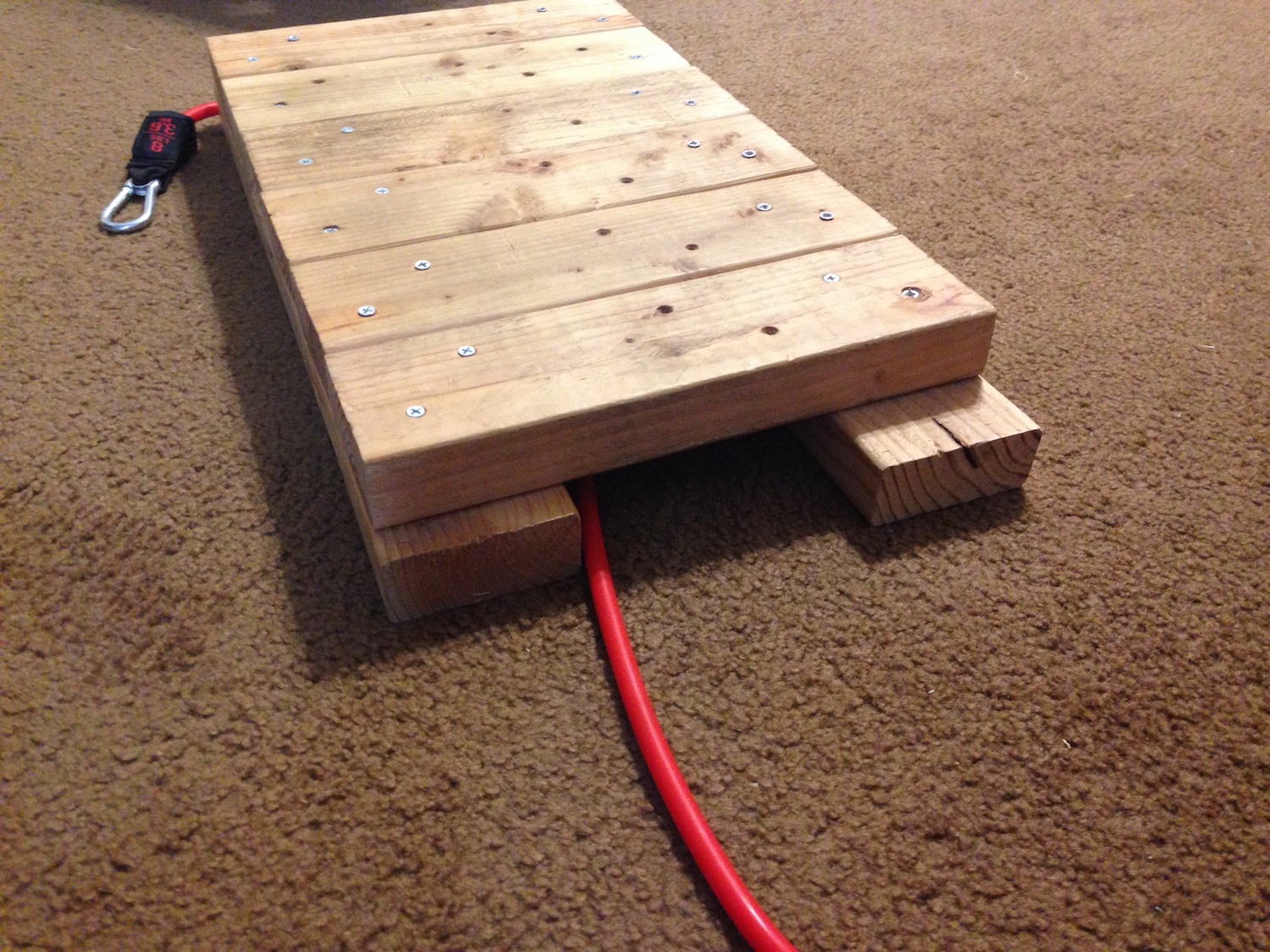 |
The platform allows you to get a deeper squat and can also be used to add resistance bands to the exercise.
To do the tuck split squat, you put the foot of your active leg on the platform lengthwise, and the other leg is tucked with the instep of the foot resting on the floor so that this leg is unable to contribute much if any to the exercise.
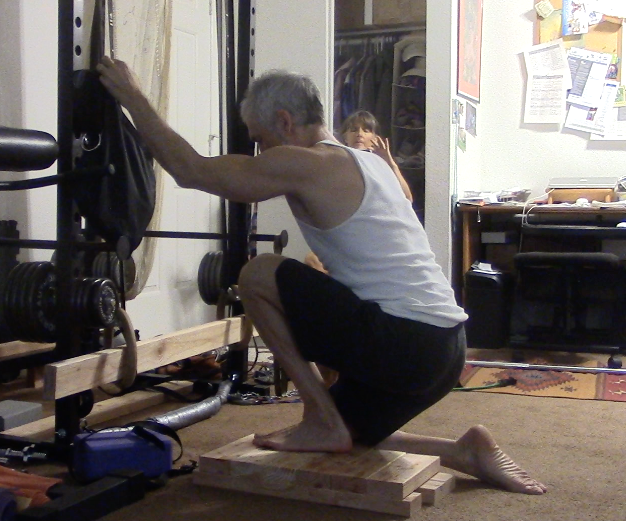 |
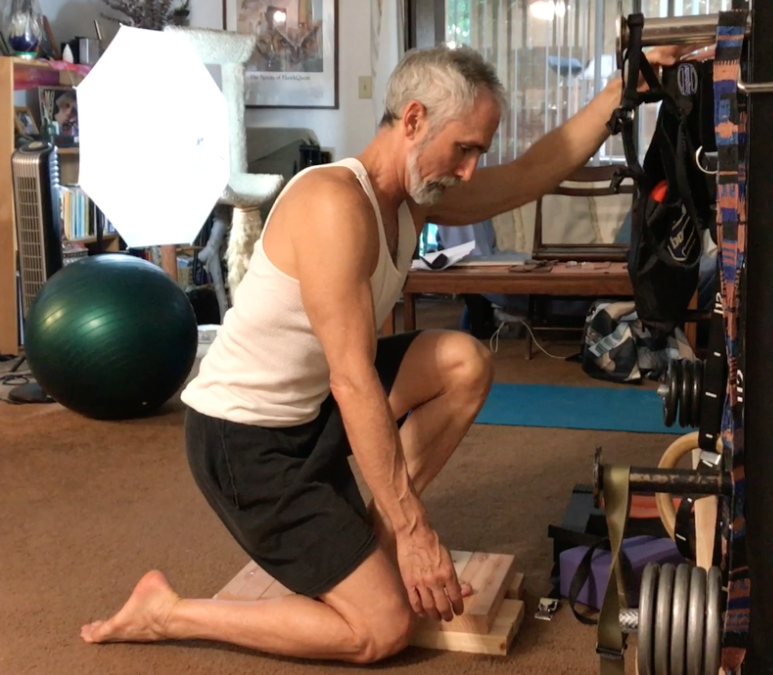 |
As shown in the photos above, I recommend you hold on to a sturdy upright with one hand to maintain balance.
Generally I recommend that you start the tuck split squat from a bottom position. This makes the exercise harder by eliminating the tendency to use stretch reflex and bouncing from the bottom. In addition, the hip and thigh muscles are stretched and at a mechanical disadvantage and under more stress in the bottom position, and evidence indicates the hypertrophic response is greater to loading in the stretched position.1 Harder means more productive. I demonstrate the basic tuck split squat in the video below.
Progressing the tuck split squat
Progression 1: 4-zone tuck split squat
When you are able to do 15 repetitions of the basic tuck split squat on each leg, I recommend progressing first to the 4-zone tuck split squat. This allows you to progress in difficulty without adding any external load. It also greatly improves your mobility in the bottom position.
To do the 4-zone tuck split squat you start from the bottom, in the most difficult range of motion. You divide the whole range of motion into quarters and you work each quarter separately as follows:
First you do 3-5 controlled repetitions in the bottom quarter of the range of motion.
When you near failure, you rise into the second quarter of the range of motion and again aim for 3-5 repetitions.
When you near failure, you rise into the third quarter of the range of motion and again aim for 3-5 repetitions.
When you near failure, you rise into the fourth, upper quarter of the range of motion. You avoid locking out the knee or hip at the top. Again you attempt 3-5 repetitions.
If you do it properly, you will have brought your hip and thigh muscles to muscular failure or very near it 4 times in one set. You should find it very difficult to complete the upper range of motion.
I demonstrate how to do it in this (old) video:
Progression 2: Add resistance with a hip belt and plates or resistance bands
|
For this progression you need additional equipment.
I explain how to set up the hip belt in the following video: |
In the video below I demonstrate how to do the tuck split squat with the hip belt and barbell plates added.
You can also use the platform above and use 41" loop bands to add resistance. Run the loop band(s) under the platform and over the shoulder opposite to the working leg, as shown below:
Notes
1. McMahon GE, Onambele GL, Morse CI, et al. How Deep Should You Squat to Maximise a Holistic Training Response? Electromyographic, Energetic, Cardiovascular, Hypertrophic and Mechanical Evidence. Chapter 8 in Electrodiagnosis in New Frontiers of Clinical Research. http://dx.doi.org/10.5772/56386.
Recent Articles
-
Ancient Roman Soldier Diet
Apr 14, 25 05:19 PM
A discussion of the ancient Roman soldier diet, its staple foods and nutritional value, and a vegan minimalist version. -
High Protein Chocolate Tofu Pudding
Jul 01, 24 12:41 PM
A delicious high protein chocolate tofu pudding. -
Vegan Macrobiotic Diet For Psoriasis
Sep 05, 23 06:36 PM
Vegan macrobiotic diet for psoriasis. My progress healing psoriasis with a vegan macrobiotic diet. -
How Every Disease Develops
Aug 04, 23 06:22 PM
How every disease develops over time, according to macrobiotic medicine. -
Why Do People Quit Being Vegan?
Jun 28, 23 08:04 PM
Why do people quit being vegan? How peer pressure and ego conspire against vegans. -
Powered By Plants
Mar 16, 23 08:01 PM
Powered By Plants is a book in which I have presented a lot of scientific evidence that humans are designed by Nature for a whole foods plant-based diet. -
Carnism Versus Libertarianism
Dec 30, 22 01:55 PM
Carnism Versus Libertarianism is an e-book demonstrating that carnism is in principle incompatible with libertarianism, voluntaryism, and anarchism. -
The Most Dangerous Superstition Book Review
Nov 15, 22 08:46 PM
Review of the book The Most Dangerous Superstition by Larken Rose.


